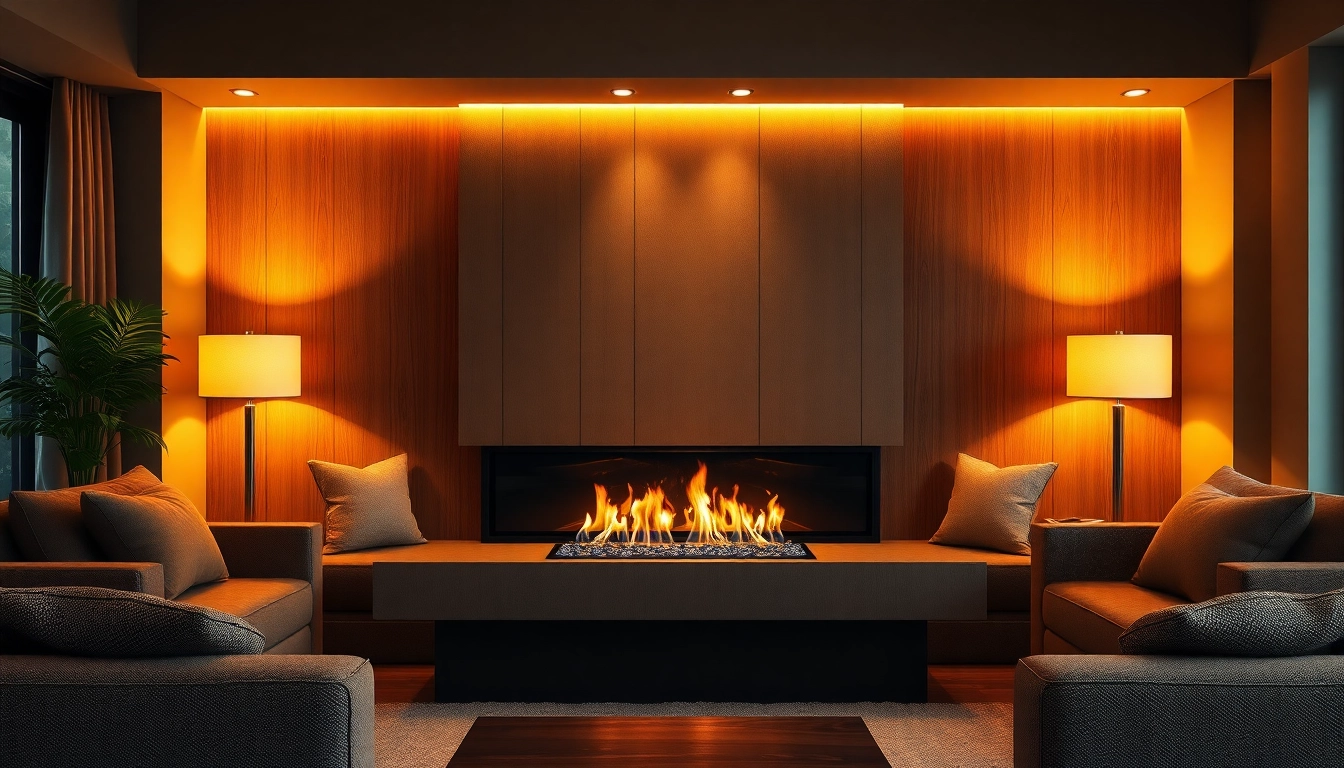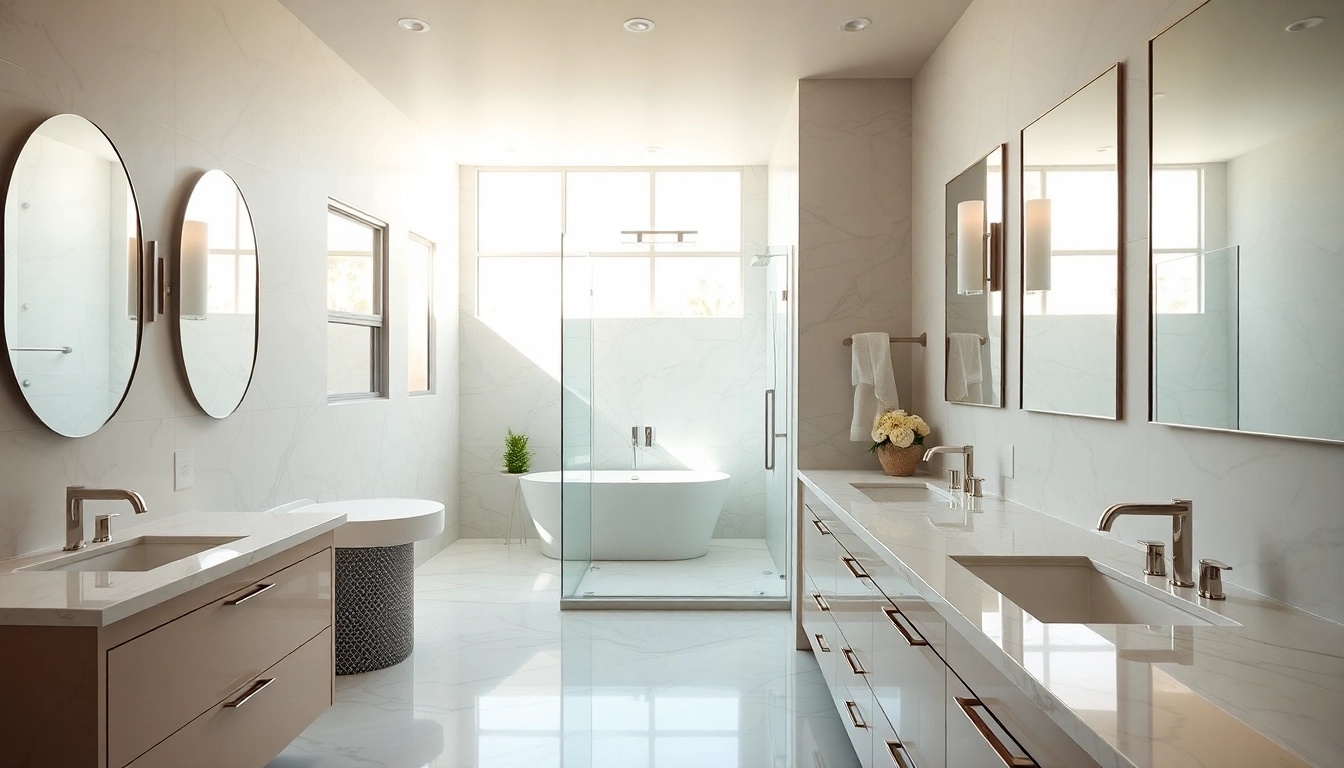Introduction to Water Vapor Fireplaces
As the quest for enhanced home aesthetics and safety continues, the water vapor fireplace is gaining traction among homeowners and interior designers alike. Unlike traditional fireplaces that rely on firewood or gas, water vapor fireplaces utilize advanced technology to create a flame-like appearance using water vapor and LED lights. This innovation not only promotes safety by eliminating the risks associated with open flames but also caters to eco-conscious consumers looking for sustainable heating options. In this comprehensive guide, we will explore the myriad benefits, technology, and maintenance associated with water vapor fireplaces.
Defining Water Vapor Fireplaces
A water vapor fireplace is an electric fireplace that creates a realistic flame effect through ultrasonic technology that produces a fine mist of water vapor. The mist is illuminated by LED lights, creating an illusion of flames flickering in the hearth. This technology allows homeowners to enjoy the ambiance of a fire without the drawbacks of traditional fireplaces, such as smoke, emissions, and heat output. With options available for both aesthetic appeal and functional heating, water vapor fireplaces are versatile installations that complement modern living spaces.
Key Features and Benefits
Water vapor fireplaces offer several distinctive features and benefits that set them apart from their traditional counterparts:
- Safety: With no actual flame and minimal heat output, water vapor fireplaces are child and pet-friendly.
- Efficiency: They require less energy than traditional fireplaces and can function effectively year-round without generating heat.
- Low Maintenance: Unlike wood-burning fireplaces that require regular cleaning and chimney maintenance, water vapor fireplaces demand minimal upkeep.
- Design Flexibility: Available in various styles—from sleek modern designs to classic mantles—these fireplaces can seamlessly fit into any décor.
- Environmental Impact: They utilize water and electricity, producing no harmful emissions, making them an environmentally friendly option.
How They Differ from Traditional Fireplaces
Traditional fireplaces rely on combustion to generate heat and light, which requires a fuel source such as wood, coal, or gas. In contrast, water vapor fireplaces operate using electricity and water, making them considerably cleaner and more efficient. Here are key differences:
| Feature | Water Vapor Fireplace | Traditional Fireplace |
|---|---|---|
| Flame Source | Ultrasonic mist and LED lights | Combustion of wood or gas |
| Heat Generation | Minimal or none | Significant heat output |
| Emissions | None | Smoke and harmful gases |
| Maintenance Required | Low | High |
| Installation Complexity | Low to moderate | High |
Understanding the Technology Behind Water Vapor Fireplaces
Ultrasonic Technology Explained
At the heart of water vapor fireplaces is ultrasonic technology, which uses high-frequency sound waves to create a fine mist from water. This mist, when illuminated by LED lights, gives the appearance of dancing flames without the heat or fire risk. The ultrasonic transducer, typically made of piezoelectric material, vibrates rapidly, creating droplets smaller than 10 microns. This innovation allows the mist to rise and disperse in the air, approximating the look of real flames in motion.
Creating the Illusion of Flames
Creating a convincing flame illusion doesn’t just rely on mist; advanced LED technology enhances the effect. Color-changing LEDs can produce a range of hues, from warm yellows and oranges to cool blues and purples, providing flexibility in ambiance creation. Moreover, some units incorporate mirrors or refractive surfaces to further amplify the illusion, making the flames appear to flicker and flow, enhancing the visual appeal significantly.
Safety Features and Benefits
Safety is a paramount concern for any home heating solution. Water vapor fireplaces address this by eliminating the risk of real flames, which can lead to accidental fires. Additionally, these systems often include features such as:
- Automatic Shut-off: Many models automatically shut off when the water reservoir is empty.
- Cool to the Touch: The surfaces of water vapor fireplaces remain cool, preventing burns and making them safe for homes with pets and children.
- Energy Efficiency: Using less energy than traditional fireplaces, they contribute to lower utility bills while providing year-round ambiance.
Choosing the Right Water Vapor Fireplace
Factors to Consider When Shopping
When selecting a water vapor fireplace, there are several crucial factors to evaluate:
- Size and Space: Measure your intended installation area and consider the size of the fireplace, ensuring it fits well within the desired space.
- Style: Choose a style that complements your home’s aesthetic—modern, traditional, or custom built-ins.
- Power Source: Most models plug into standard outlets, but some may require hardwiring for built-in installations.
- Additional Features: Look for features such as color-changing capabilities, adjustable mist output, remote controls, or smart home integration.
Top Brands and Models on the Market
Several brands dominate the market for water vapor fireplaces, offering various models with unique features:
- Aquafire: Known for their realistic flame effects and modern designs, Aquafire offers high-quality models that combine practicality with aesthetics.
- Dimplex: A pioneer in electric fireplace technology, Dimplex’s models often feature innovative designs and clear flame effects.
- Modern Blaze: They provide a variety of fireplaces and inserts focused on safety and environmental consciousness.
Installation Options: Built-In vs. Freestanding
Water vapor fireplaces come in both built-in and freestanding versions:
- Built-In Units: These fireplaces are integrated into a wall or structure, providing a streamlined look and a more permanent installation.
- Freestanding Units: These are portable and flexible, allowing homeowners to relocate them easily or use them in different areas.
Maintenance and Care for Your Water Vapor Fireplace
Cleaning and Upkeep Best Practices
While water vapor fireplaces require less maintenance than traditional options, regular upkeep is necessary to ensure optimal performance:
- Regular Dusting: Use a soft cloth to dust the exterior, focusing on any decorative elements.
- Water Maintenance: Regularly check the water reservoir and refill it with distilled water to prevent mineral buildup.
- Cleaning the Tank: Every few weeks, remove the tank and clean it with vinegar or a specialized cleaner to prevent algae and buildup.
Common Troubleshooting Tips
Many homeowners encounter minor issues with water vapor fireplaces. Here are some common troubleshooting tips:
- No Mist Produced: Ensure the water reservoir is filled and check for clogs in the ultrasonic transducer.
- Flames Look Dim: Inspect and replace the LED bulbs if necessary.
- Noise Production: If the fireplace is making abnormal sounds, check for any debris around the pump or transducer.
Long-Term Maintenance for Longevity
To extend the lifespan of your water vapor fireplace:
- Schedule regular check-ups for electrical components to ensure safe operation.
- Invest in parts when needed, especially LED lights, as they can have a shorter lifespan with frequent use.
- Keep an eye on the water quality; using distilled or filtered water can greatly reduce mineral buildup.
The Future of Home Heating: Trends in Water Vapor Fireplaces
Environmental Impact and Energy Efficiency
Water vapor fireplaces hold promise in addressing environmental challenges. By utilizing water and electricity, they eliminate harmful emissions associated with traditional heating methods. As sustainable practices gain prominence, these eco-friendly fireplaces become increasingly desirable. Moreover, advancements in technology make them more energy-efficient, appealing to the environmentally conscious consumer.
Innovative Designs for Contemporary Homes
Manufacturers are continually innovating designs to cater to modern sensibilities, blending technology, and aesthetics seamlessly. Upcoming trends may include:
- Smart Home Integration: Smart water vapor fireplaces that can be controlled via mobile applications are becoming more common.
- Customization Options: Varied finishes, colors, and styling options allow homeowners to personalize their fireplaces to match home décor.
- Compact Models: Space-saving designs are ideal for urban living, allowing those with limited space to enjoy a cozy atmosphere.
Consumer Preferences and Market Growth
As consumer preferences shift towards sustainability and safety, the market for water vapor fireplaces is expected to grow. The increasing demand for versatile home décor solutions reinforces the relevance of water vapor technology in contemporary living spaces. Research suggests that as more homeowners become aware of the benefits, sales are likely to see significant increases within the next few years, reinforcing this trend as a viable alternative to traditional heating solutions.


